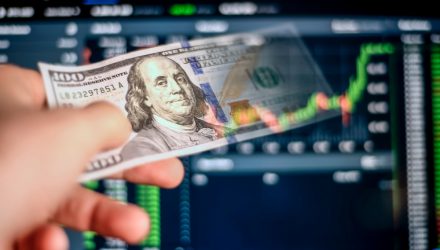Despite the Federal Reserve’s best (and apparently only) efforts, high inflation remains stubbornly persistent. In September, the Consumer Price Index for All Urban Consumers increased 0.4% (seasonally adjusted) and rose 8.2% over the last 12 months (not seasonally adjusted). The index for all items less food and energy increased 0.6% in September (SA) and is up 6.6% over the year (NSA).
The monthly increase is more than the 0.3% Dow Jones estimate. Investors believe that this data most likely means that the Fed will implement a fourth consecutive 0.75 percentage point rate hike when it meets in early November. The U.S. central bank has raised rates three full percentage points since March.
Following the Bureau of Labor Statistics’ announcement, stock futures tumbled during morning trading on Thursday, with futures for the Dow Jones Industrial Average falling 530 points, or 1.80%, while the S&P 500 and Nasdaq 100 futures dropped 2.18% and 2.97%, respectively.
Many analysts and investors worry that the Fed’s hawkish path towards fighting inflation will push the U.S. economy into recession.
JPMorgan Chase CEO Jamie Dimon on Monday told CNBC that a “very, very serious” mix of headwinds — including runaway inflation, interest rates going up more than expected, the unknown effects of quantitative tightening, and Russia’s war in Ukraine — was “likely to put the U.S. in some kind of recession six to nine months from now.”
Dimon added he’s unclear as to how long a recession in the U.S. would last. So, investors should “be prepared” for a series of possible outcomes. “It can go from very mild to quite hard and a lot will be reliant on what happens with this war. So, I think to guess is hard, be prepared.”
Dimon said the one guarantee he could be sure of was volatile markets.
With volatile markets, continued rising rates, and the looming threat of recession expected for the near- to middle-term (at least), investors should be patient and proactive with their stock investing. That’s where active management can help.
While passive strategies lack the flexibility to adapt to changing market environments, active ETFs can offer the potential to outperform benchmarks and indexes.
“Active managers have the flexibility to take advantage of market volatility and add to favored positions when prices become more attractive,” said Todd Rosenbluth, head of research at VettaFi.
As part of its lineup of active ETFs, T. Rowe Price offers a suite of actively managed equity ETFs, including the T. Rowe Price Blue Chip Growth ETF (TCHP), the T. Rowe Price Dividend Growth ETF (TDVG), the T. Rowe Price Equity Income ETF (TEQI), the T. Rowe Price Growth Stock ETF (TGRW), and the T. Rowe Price US Equity Research ETF (TSPA).
T. Rowe Price has been in the investing business for over 80 years through conducting field research firsthand with companies, utilizing risk management, and employing a bevy of experienced portfolio managers carrying an average of 22 years of experience.
For more news, information, and strategy, visit the Active ETF Channel.








